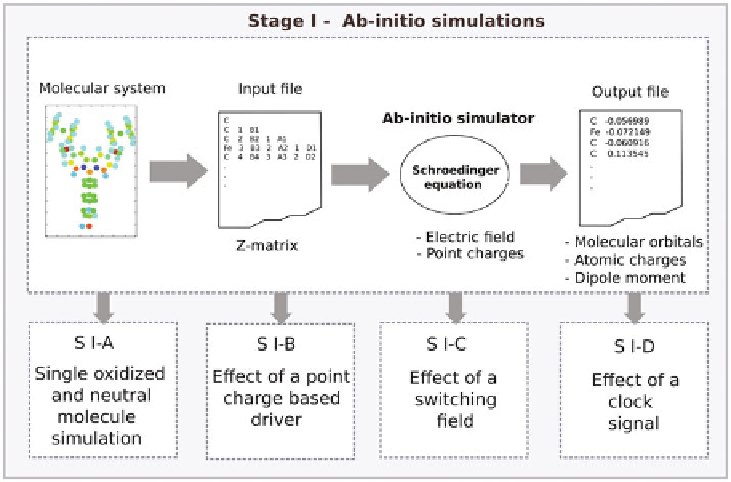Information Technology Reference
In-Depth Information
Fig. 11.
Stage I - Ab-initio simulations: from molecular system chemical inputs to
molecular system energetic and electrostatic quantities.
view about the molecular QCA, new figures of merit could be used to analyze the
QCA molecule, both in its neutral and oxidized or reduced form. In particular,
the charge distribution of the molecule has to be evaluated when the molecule
is subject to a write-in system (like an electric field as described in [
21
]).
S I-B - Effect of a Point Charge Based Driver.
Regarding the interaction
between molecules, the methodology discussed here involves the simulation of
a system considered as a complete QCA cell: it contains an ideal driver repre-
sented by point charges located at the distance
d
from the molecule as shown
in Fig.
12
(A). In this way, the ideal driver could emulate the other molecule
of the complete QCA cell. In the case of neutral molecule, the point charges
of the driver molecule are two and opposite (which are +1
e
and
1
e
), placed
respectively at the position of the two working dots, imitating an internal charge
splitting that preserves the neutrality of the driver molecule. Thus, putting the
polarized ideal driver next to the molecule and changing the state of the driver
(swapping the position of the two point charges), it is possible to check whether
or not the target molecule changes its logic state as well.
On the other hand, in the case of oxidized molecule, only one positive charge
(+1
e
) is considered to simulate the ideal driver. In particular, the point charge
is located on one of the two dots of the driver, according to its logic state. In
this way, considering the case of driver at logic 1 (as represented in Fig.
12
(B)),
the charge distribution on the target molecule could be evaluated by means
−

Search WWH ::

Custom Search